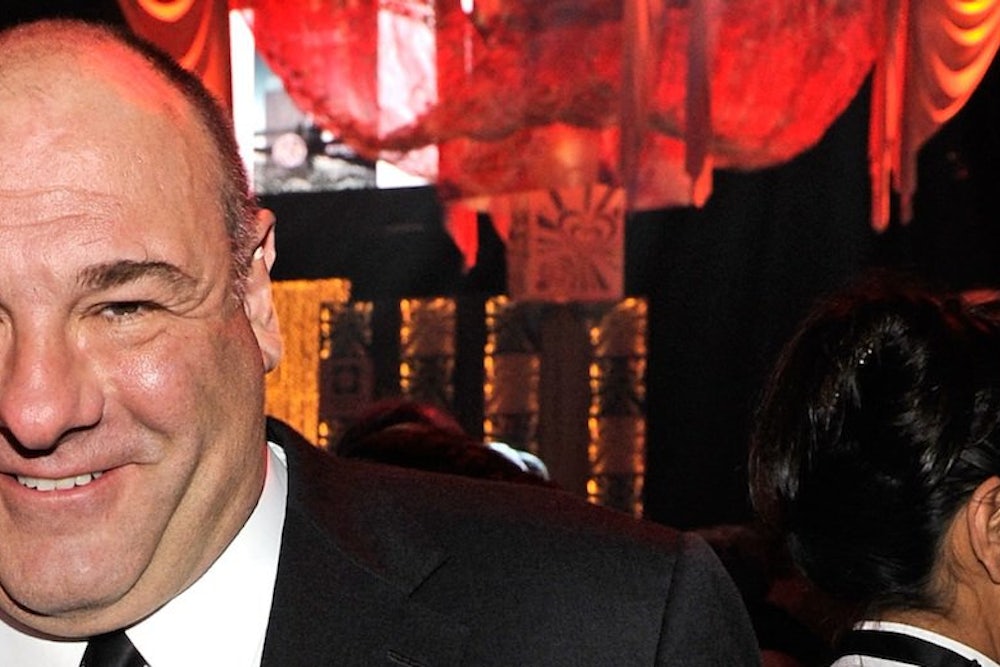James Gandolfini acted in and considered many roles in his distinguished career, but there was one man who fascinated him, whom he never got to play: New York’s powerful master builder, Robert Moses.
Urban planning may seem an unlikely interest for Gandolfini, but I came to know about this secret passion in 2009, when HBO called my agent, Richard Abate, for the film option for my book, Wrestling with Moses: How Jane Jacobs Took on New York's Master Builder and Transformed the American City. Gandolfini reviewed several scripts, but the project never came together, which is too bad: He would have made a great Moses.
The story told is how Moses, dapper and swaggering, became the driving force behind the New York City we know today—its bridges and tunnels, parks and playgrounds, Jones Beach, Shea Stadium, and the housing towers and superblock apartment buildings across the urban landscape. A master of political maneuvering, he outlasted mayors, governors, and presidents—until a housewife from Scranton, Jane Jacobs, stood up to his grand plans for road building and bulldozing vast swaths of Greenwich Village.
A powerful man at the throne of an empire, challenged by an audacious woman: Gandolfini, scouting for post-Sopranos projects, wanted to star, produce and direct. After I learned about Gandolfini’s interest, I couldn’t watch James Gandolfini and not think of Robert Moses. It was hard to imagine another actor who could better channel this exceptional personality.
Moses, after all, was a little like a crime boss. He started out in the 1920s as a state parks commissioner and built the parkways of Long Island, and Jones Beach. From the 1930s to the 1960s he built his syndicate, based in the quasi-public and independent Triborough Bridge Authority, which had its own fleet and police force. He had millions at his disposal, the power to hire and fire, and made big things happen with a single phone call made from his office lair at Randall’s Island at the base of the mighty span.
The son of a wealthy merchant, Moses was ferried around in limousines so often he never got a driver’s license of his own. He was always well-dressed in suit and tie, was an infamous workaholic and expected the same from his staff, and could be terribly charming when he wanted to be. He inspired loyalty as much as fear.
Moses, an avid swimmer who lived to the age of 93 (he died in 1981), gets blamed for a lot of bad things in New York these days. Jacobs pushed back when she saw he was going to far—with a roadway through Washington Square Park, for example, or the Lower Manhattan Expressway, the ten-lane elevated highway Moses wanted to blast through SoHo.
And that might have been what Gandolfini found so compelling—what happens to a powerful man who overreaches. The fact that a woman hastened his downfall was equally delicious. At one point Moses, frustrated over the Washington Square Park plans, complained that there was nobody aginst the project but a “bunch of … mothers!”
Gandolfini loved New York and was a student of the city and its evolution over time. He lived not far from Jacobs’ house at 555 Hudson Street—indeed in the very area where she thwarted the razing of the cozy streets and townhouses in the name of urban renewal. Left unmolested, the neighborhood has become the epitome of gentrification – “oversuccess” as Jacobs called it. But it was home. Gandolfini must have been glad that she stopped Moses from wrecking it.
Moses had a great run. Some today wish there were more leaders like him—to worry about things like infrastructure and to get things done. But his life and career had an inevitable and ultimately tragic arc. The swagger and the confidence when the times were good—and then the vulnerability, never shown in public. All of this made James Gandolfini the perfect actor to play Robert Moses, in what is now the role never played.
Anthony Flint is a fellow and director of public affairs at the Lincoln Institute of Land Policy. His next book, The Raven: The Life of Le Corbusier, Maker of the Modern, a narrative nonfiction account of the father of modern architecture, will be published by Amazon Publishing in 2014.Twitter: @anthonyflint.
